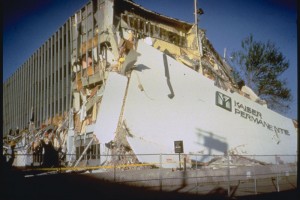But nearly two years later, almost half of the hospitals still have not responded, leaving some disaster officials frustrated over their inability to help the hospitals plan for the worst.
The unsuccessful effort casts a harsh light on the potential pitfalls of forging public-private partnerships among health care facilities to plan for earthquakes, floods and other natural disasters.
One national emergency expert, Dr. Arthur L. Kellermann, said he finds the poor response inexplicable.
“This is FEMA, for God’s sake, and federal agencies that are charged with helping hospitals in emergency events,” said Kellermann, a policy analyst at the RAND Corp.
“These hospitals are getting hundreds of millions –- maybe billions –- of dollars from Medicare and Medicaid every year, and they can’t fill out a questionnaire of interest to the country and Southern California? I find that deeply disturbing,” he said.
Disaster preparedness is taking on new urgency after the ravages of this fall’s Hurricane Sandy. Backup power generators failed at several New York City area hospital and endangered patients’ lives, especially those on ventilators and other machines.
The vulnerability of those hospitals has revived concern about experts’ predictions that more than 60 percent of Los Angeles area hospitals would be damaged beyond repair in a major quake.
That specter led to the 2011 survey, called the Southern California Catastrophic Earthquake Plan Survey, which local emergency agencies sent to hospitals early in early 2011, some with an April 30, 2011, deadline.
The largest group of hospitals declining to participate was Kaiser Permanente of Southern California. A spokeswoman would say only that Kaiser had concerns about “the format and the amount of details being asked for in this optional questionnaire.”
Among hospital groups that did cooperate were Dignity Health (formerly Catholic Healthcare West), three Providence hospitals in the San Fernando Valley and UCLA Medical Center.
Leaders of the California Hospital Association, the state’s hospital industry group, were troubled that they was not involved at the start, and that the survey was issued outside “normal communications channels,” said spokeswoman Jan Emerson-Shea. Her group later worked with surveyors to review and refine the questions, she said.
Some local emergency officials, however, said the association’s uneasiness with the survey had an effect. “They were watching over their members, but it ended up throwing a big wrench into the process,” said Jerry Nevarez, hospital preparedness coordinator at the Inland Counties Emergency Medical Services Agency in San Bernardino.
Now, new talks have begun with the hospital association and state and local officials over fashioning an earthquake survey that would go to hospitals statewide in 2013.
Spurring the survey was a landmark 2008 report called “The Shakeout Scenario,” produced by 300 top-level government, academic and industry experts which scrutinized what damage would be inflicted by a 7.8-magnitude quake near the Salton Sea on the southern San Andreas Fault.
The impact would spread to nine counties, killing 1,800 people, forcing 50,000 injured to emergency rooms and ripping apart freeways and power lines, the report predicted.
“When you have all counties impacted at the same time to the same level, it takes the government to make sure they get what they need to keep going,” said Gerold Fenner, regional emergency coordinator in San Francisco for the U.S. Department of Health and Human Services' preparedness and response branch. Fenner recently returned from working on the federal response to Sandy.
For instance, FEMA has a cache of emergency back-up generators that could be air-lifted to a beleaguered hospital stranded without power, Fenner said. If his agency has that hospital’s information filed away, FEMA could help federal authorities deliver the generator more quickly, he said.
Federal officials have collected that sort of information in other states, including hurricane-prone states in the South, he said.
At RAND, Kellermann said that state and national policy makers may need to review whether such surveys should be made mandatory.
“The whole point of these surveys is not to make hospitals look bad. It’s to help them systematically figure out how to get better,” he said.
Learn more:
Major Quake Could Sideline 60 percent of SoCal Hospitals (CHCF Center for Health Reporting)
